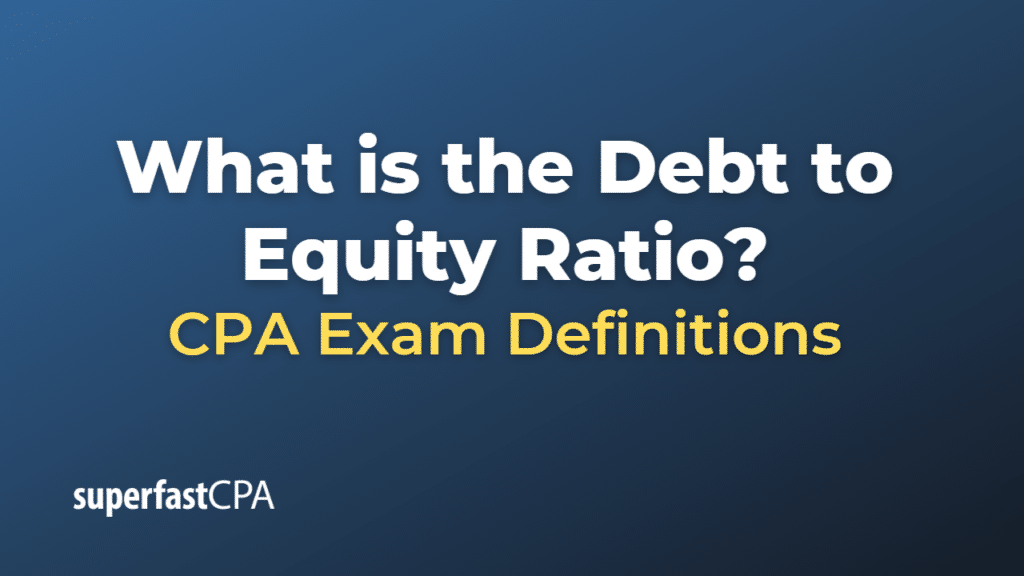Debt to Equity Ratio
The Debt to Equity Ratio is another important financial metric that measures a company’s financial leverage. It indicates the relative proportion of shareholders’ equity and debt used to finance the company’s assets.
Here’s the formula:
\(\text{Debt to Equity Ratio} = \frac{\text{Total Debt}}{\text{Shareholders’ Equity}} \)
In this formula:
- Total Debt includes both short-term and long-term debt obligations.
- Shareholders‘ Equity is the net value of a company, calculated by subtracting total liabilities from total assets. It represents the net investment of the company’s owners (shareholders).
A higher Debt to Equity Ratio indicates that a company has been aggressive in financing its growth with debt, which can result in volatile earnings due to the additional interest expense. On the other hand, a lower ratio might indicate that the company is not taking full advantage of the increased profits that financial leverage may bring.
Like all financial ratios, a company’s Debt to Equity ratio should be compared with industry averages or with similar companies. Different industries have different average Debt to Equity ratios due to the nature of their business. For example, capital-intensive industries like utilities and manufacturing often have higher ratios, while technology or service-based industries may have lower ratios.
Example of the Debt to Equity Ratio
Let’s consider a hypothetical example:
Suppose we have a company, ABC Inc., with the following financials:
- Total Debt: $500,000 (This includes all short-term and long-term debt obligations)
- Shareholders’ Equity: $1,000,000 (This is the net value of the company, calculated by subtracting total liabilities from total assets)
We can calculate the Debt to Equity Ratio using the formula:
\(\text{Debt to Equity Ratio} = \frac{\text{Total Debt}}{\text{Shareholders’ Equity}} \)
Plugging in the numbers:
\(\text{Debt to Equity Ratio} = \frac{\$500,000}{\$1,000,000} = 0.5 \)
This means that for every dollar of equity, ABC Inc. has 50 cents in debt.
Again, this ratio by itself doesn’t tell us if the company is in a good or bad financial position. It is most useful when compared to the industry average, to the company’s past ratios, or to the ratios of other companies in the same industry. For example, if the industry average Debt to Equity Ratio is 0.8, then ABC Inc. would appear to be less reliant on debt than its competitors. Conversely, if the industry average is 0.3, then ABC Inc. might be considered more financially risky due to its higher reliance on debt.













